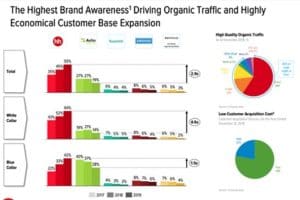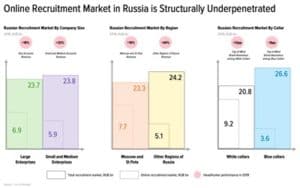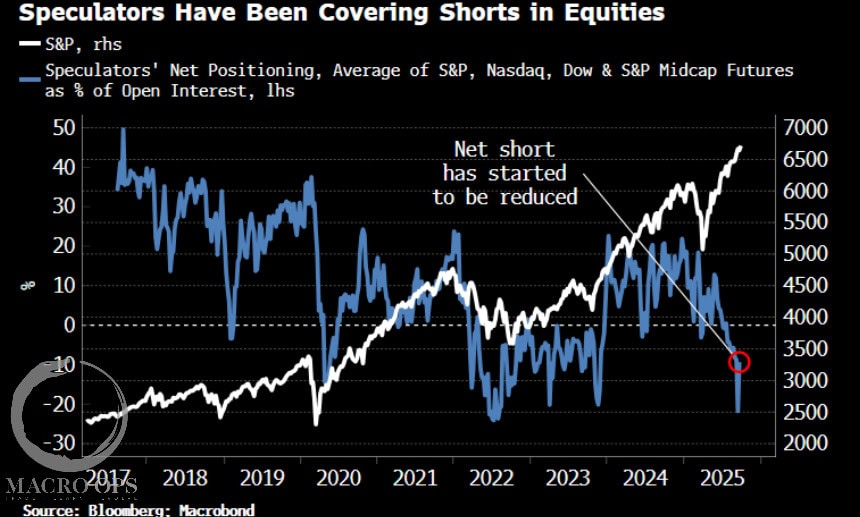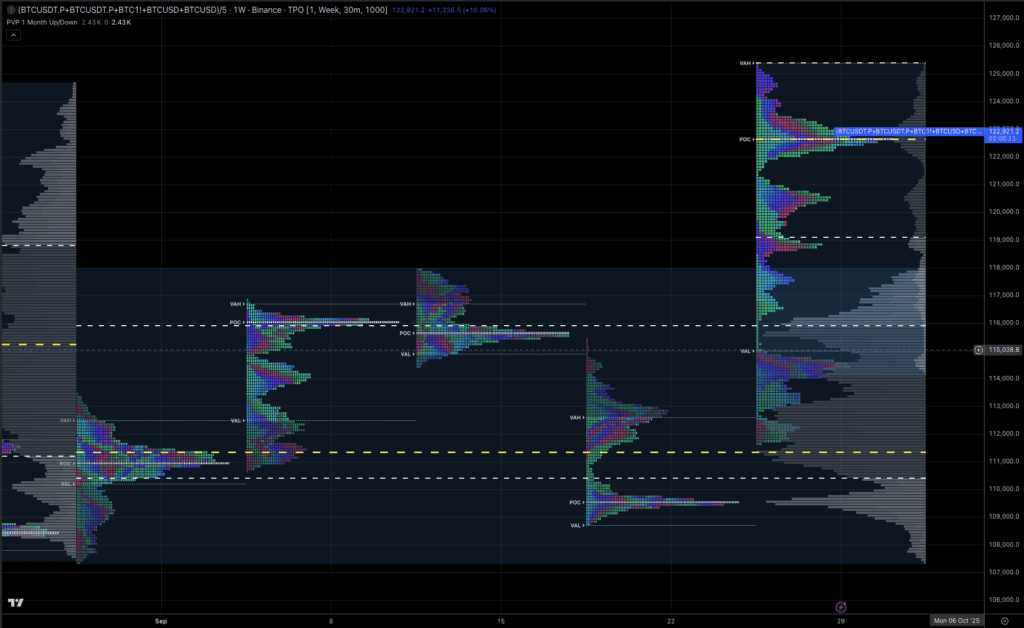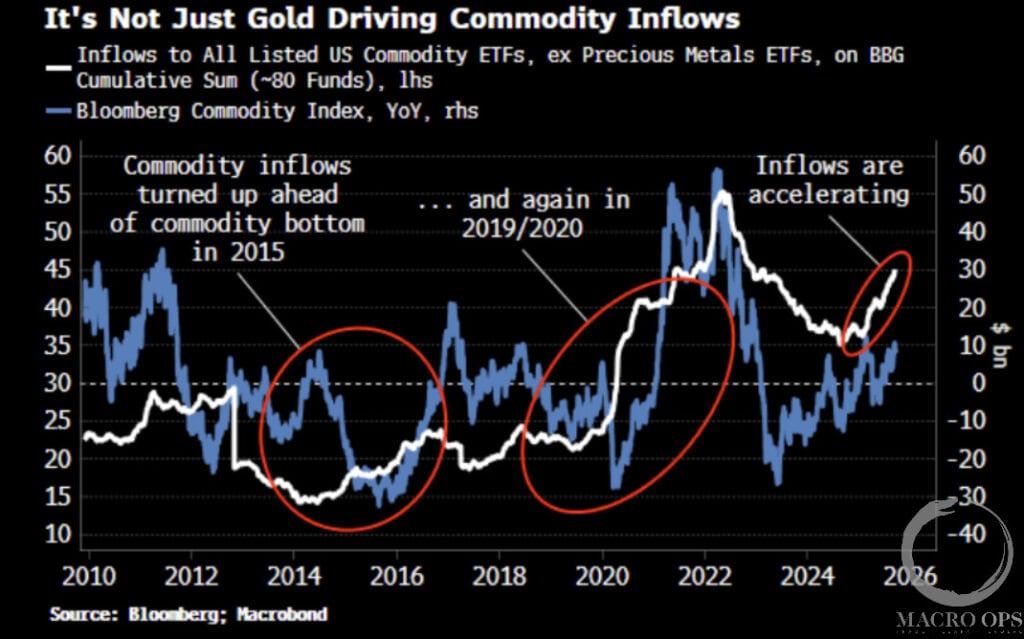HeadHunter (HHR) operates an online recruitment platform in Russia, Kazakhstan, Belarus, and other Baltic countries. It offers employers and recruiters paid access to its CV database and job postings platform and job seekers and employers with a range of value-added services.
HHR is the clear leader in the online recruitment platform industry in Russia, the remaining CIS countries (Commonwealth of Independent States), and the fifth most popular online recruitment platform globally. Online recruitment is a winner-take-most business with tremendous scaled network effects. The more job applications you have on the platform, the more attractive the platform is to recruiters. In turn, the more recruiters you have on the platform, the more attractive that platform is to job seekers.
The company dominates across all significant platform KPIs. HHR sports (on average) 4.6x the traffic, 6.2x the number of candidates, and 3x the amount of employer content compared to its competitors.
It’s almost impossible to stop HHR’s competitive flywheel. The most customers lead to the most jobs, which generates the most traffic, which gets the most job seekers to the website, which generates more customers.
We see the results of the flywheel in real-time when comparing HHR’s next-closest competitor, SuperJob. HHR has increased its traffic gap against SuperJob by 13x since 2010.
HHR’s network effects create the highest brand awareness within the country and contribute to its industry-low customer acquisition cost. In other words, HHR’s dominant position allows it to grow with little capital compared to its peers. The company spends ~7% of EBITDA on CAPEX while the competition averages 34%.
With a large addressable market, high structural employee turnover, and an under-priced product offering, HHR has a long runway for top-line growth and margin/multiple expansion. Investors can buy HHR for a ~50% discount to our intrinsic value estimate (100% upside).
The Online Recruitment Business
There are two sides to the online recruitment business:
- Candidates (employees)
- Employers
Candidates have free access to most of the platform’s services. For example, job seekers get free CV posting and job applications (like Indeed). Job seekers also have the option to pay for premium services.
HHR offers four main products to employers:
- Access to Candidates Pool
- Access to Candidates Pool Bundled with Job Postings
- Job Postings
- Other Value Add Services
The company charges a subscription/semi-subscription-based model for the Candidates Pool and Job Postings. 91% of HHR’s revenue is subscription-based, with 51% via their Candidates Pool product.
Russia’s Structural Drivers For Long-Term Online Recruitment Growth
Russia is the perfect place for online recruitment platforms, specifically those that have already captured a dominant position. Four main macroeconomic drivers extend HHR’s long-term growth runway:
- Recovering economy driving wages higher
- Active & Intensifying Human Capital Market
- Low unemployment rate + high turnover
- Gradually declining employee population.
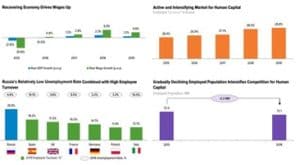 While wages remain stagnant here in the States, Russia’s experiencing the opposite. In 2015, real wage growth grew -9% YoY. By 2019, real wages rose 4.8%, while real GDP growth increased 1.3%. Higher salaries attract better talent to the job-seeking pool. It also gives current employees reason to window-shop a potential job shift, further increasing the demand for online recruitment platforms.
While wages remain stagnant here in the States, Russia’s experiencing the opposite. In 2015, real wage growth grew -9% YoY. By 2019, real wages rose 4.8%, while real GDP growth increased 1.3%. Higher salaries attract better talent to the job-seeking pool. It also gives current employees reason to window-shop a potential job shift, further increasing the demand for online recruitment platforms.
Wage growth and window-shopping lead to higher employee turnover. As of 2019, Russia sported a 28.8% employee turnover percentage. It’s abnormal to see turnover rates high in a country with such low unemployment (~4.6%). For comparison, the UK had 3.8% unemployment in 2019 with 17% employee turnover. Even Italy, with its 10% unemployment rate, sport 12.1% employee turnover.
Russian companies constantly battle one another for the best talent at the best price. It’s a war that will only intensify as Russia’s eligible employee population shrinks. In 2015, Russia had 72.3M eligible employees. Four years later, that number shrunk by 200K to 72.1M qualified workers.
Online Recruitment Remains Highly Under-Penetrated
HHR generated RUB 7.7B in 2019 revenue. During that year, Russian companies spent a total of RUB 47B on recruitment. That gives HHR a ~16% market share by revenue. 16% doesn’t look like a large percentage, which is a good thing for long-term investors. The company should continue to take share as online recruitment becomes a more significant part of the total recruitment market.
There are three ways to analyze Russia’s recruitment market (recruitment market figures as of 2019):
- Company size
- Large Enterprises: RUB 23.7B
- Small/Medium Enterprises: RUB 23.8B
- Region
- Moscow & St. Petersburg: RUB 23.3B
- Other Regions: RUB 24.2B
- Collar (a type of job)
- White: RUB 20.8B
- Blue: 26.6B
Here’s the crazy part. Online recruitment accounts for ~26% of the total recruitment revenue generated. One can assume that that percentage will only grow over time as more of Russia moves online (including recruitment).
Assuming a 26% online penetration rate, we get ~RUB 12.35B in online recruitment revenue. At RUB 12.35B in revenue, HHR accounts for ~62% of Russia’s online recruitment market by revenue. So which company will take most of that market share growth? The company sports the strongest brand awareness, the largest CVs database, and the most significant employers looking to hire.
HeadHunter: The Benefits of First-Place
HHR is the clear industry leader in online recruitment platforms. The company possesses a solid and near-impenetrable moat against its peers. The trench has three parts:
- Brand awareness: Top-of-mind in its industry
- Defensible Data: Largest dataset connecting CVs to suitable jobs
- Lowest-Cost Operator: Spends the least to get the most users
Think of HHR’s moat as a three-legged stool. The company needs each leg to maintain its competitive advantage. Lose one, and they sacrifice the integrity of the entire castle. Let’s walk through the reasons why.
First, HHR commands the highest brand awareness score in its industry. 55% of those surveyed knew who HHR was and what they did in 2019. That score was 2.9x above the average of the company’s competitors. The next closest company, Avito, generated 19% brand awareness. But is white-collar jobs that give HHR its brand awareness lead.
For example, HHR scored 64% when the survey asked white-collar employees/employers. Yet when the study switched to blue-collar work, HHR scored 42%. Still high, but Avito also scored a 40% — considerably closing the gap against its rival.
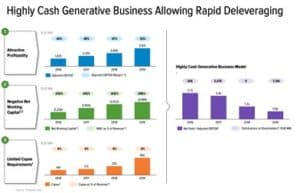 Being synonymous with your industry (i.e., HHR = online recruitment) gives HHR un-reachable advantages in its customer data. The company has the largest database of CVs and job listings in the country.
Being synonymous with your industry (i.e., HHR = online recruitment) gives HHR un-reachable advantages in its customer data. The company has the largest database of CVs and job listings in the country.
In turn, more people use HHR’s mobile app to both post and apply for jobs. As of 2019, the company had 22M users on its app, commanded a 73% share of job seeker mobile traffic, and its mobile app ranked the #1 in Russia’s business section on the iOS store.
As the most popular site for job seekers and employers, HHR doesn’t need to spend much to acquire customers. The company generates 93% of its web traffic from free sources like Direct, email, and Organic search. 78% of its customers in 2019 converted via one of HHR’s free channels. Said another way, the company didn’t have to pay a single ruble for 78% of its new customers in 2019. That’s hard to wrap your head around. Since the company doesn’t need to spend on CAC, it’s free to allocate its resources to developing its technology and provide the best service to its customers.
HHR spends 7% of its EBITDA on CAPEX when its peers spend nearly 5x that amount (34%). Reduced CAPEX spend allows HHR to generate above-average, 50% EBITDA margins. Its peers, however, yield 30% margins.
Two Ways HHR Can Grow: Pricing & Blue-Collar Penetration
HHR is a tremendous business with one of the strongest network-effect moats I’ve ever seen. Yet, there are still two levers the company can pull to further increase margins and market share. First, HHR is under-pricing its services. Under-pricing makes sense when you’re trying to capture a market and get the flywheel going (as HHR was). With the network effects firmly entrenched, HHR can move from “growth” to “monetization” mode.
The company generated (in USD) $5.6 in revenue per UMV (Unique Monthly Visitor) and $375 in ARPC (Average Revenue Per Customer) in 2019. Out of its peer group of six comparable companies, HHR under-priced its offering by 11.08x. At the lower-end, InfoEdge generated $16.5 and $1,352 respectively. At the upper end, StepStone generated $160.3 and $5,191, respectively.
In other words, there is a lot of room to increase prices. HHR understood this and responded in 2020. The company increased 30-day Bundled Subscription prices by 12% and job postings prices by 5-48% (depending on posting package size).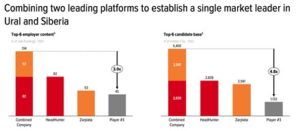
The second way HHR can grow is by increasing its blue-collar penetration rates. The company addressed this issue by acquiring Zarplata. Zarplata is a blue-collar-focused job search portal primarily serving the Serbian and Urals regions. 99% of Zarplata’s revenues come from outside Russia, which helps HHR diversify its revenue base across collar and geography.
The two businesses create the most prominent market leader for employer content and candidate base. The combined company will have 3x the number of employer content and 4.8x the number of job candidates.
Where This Investment Can Fail
I’m finding it hard to create scenarios where HHR doesn’t win out over the next three to five years. Between online penetration expansion, price increases, and blue-collar market growth, HHR has all the ingredients for a long-term structural winner.
But if there are any places we can go wrong with this investment, where are they? I think there are a few scenarios:
- The company loses vital players in management (CEO/CFO)
- HHR experiences higher churn rates as they increase prices
- Russia’s economy worsens, and wages revert to negative growth.
- Most employers and job seekers suddenly choose to list on a competitor’s platform.
Management looks firmly in place. The CEO and CFO have been with the company since 2008. During that time, HHR increased the number of paying customers by 38x, 15x’d revenue growth, and 2x’d EBITDA margin.
The highest probability risk at this point is customer churn. The company hasn’t experienced significant churn during its history of under-pricing the competition. Now with price hikes firmly in place, what will customers do? Higher churn will lead to more significant CAPEX spend, which reduces EBITDA margins and FCF.
Concluding Thoughts & Valuation
Let’s assume the company grows revenues at a 20% CAGR for the next five years to reach RUB 19.29B by 2024. The company should continue to increase prices while maintaining its low-cost acquisition structure, which allows for higher EBITDA margins in the future. We’ll assume HHR reaches 55% EBITDA margins by 2024, or RUB 10.61B in EBITDA.
What would a reasonable buyer pay for this business on an EV/EBITDA basis? A 25x multiple sounds reasonable given the company’s structural advantages and massive network effect moat.
At 25x 2024, EBITDA HHR would sport a RUB 265B Enterprise Value. Add back cash of RUB 1.32B and subtract debt of RUB 4.7B, and you get RUB 262B in shareholder value, or ~$71/share.
There are three long-term catalysts for HHR to grow revenue, take share, and expand its addressable market:
- Price hikes on services
- Increased penetration of online recruitment
- A more significant share of the blue-collar recruitment market
I must reiterate: HHR has one of the strongest moats I’ve ever seen in a company. Online recruitment platforms give rise to some of the most substantial network-effect advantages in business. Benefits that grow with each incremental employer and job seeker added to the platform. Plus, The company operates inside a high-turnover/low-unemployment country with a declining employee population.
HHR is a tremendous business trading at a respectable price. The company has all the ingredients of one of those businesses that always looks expensive, but for valid reasons. Whenever you feel too scared to invest in Russia, remember there are businesses like HeadHunter hiding in plain sight.


